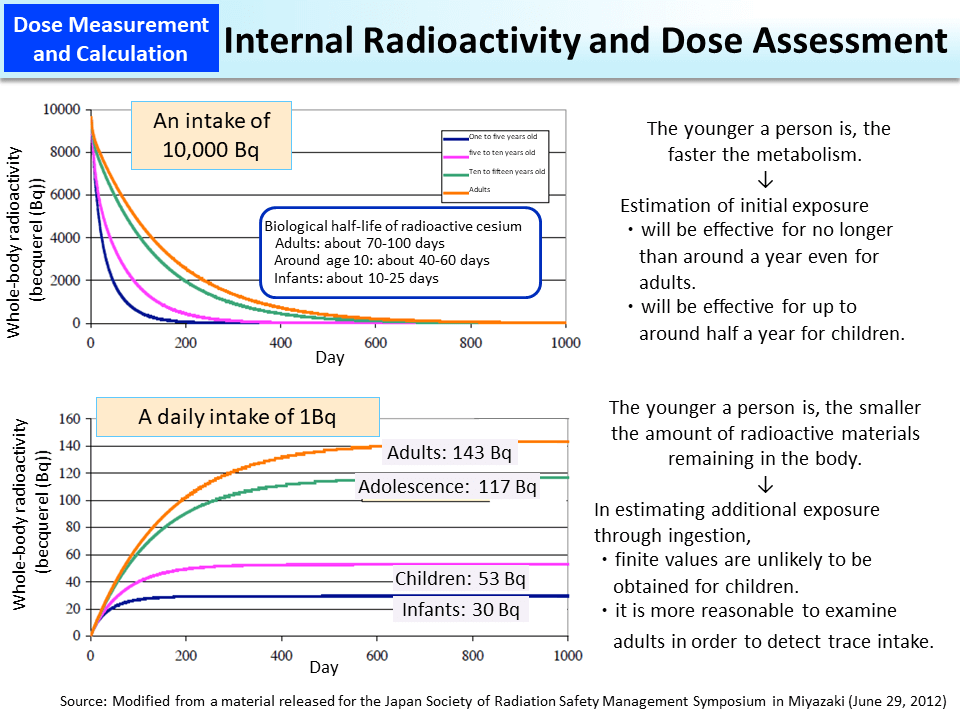Internal Radioactivity and Dose Assessment
Whole-body counters can measure the amount of internal radioactivity on the day of measurement but have a detection limit depending on machines' performance or measuring time, as do other measuring instruments.
Radioactive cesium has a biological half-life of 70-100 days for adults (p.11 of Vol.1, "Half-lives and Radioactive Decay"), so estimation of initial exposure would be effective for no longer than around a year after a nuclear accident. As shown in the upper figure, the radioactivity of cesium taken into the body approaches 0 Bq in a year or so because of its effective half-life, so the internal radioactivity returns to its previous value. Subsequent whole-body counting is performed for the purpose of estimating chronic exposure, mainly from foods (p.59 of Vol. 1, "Data on Internal Exposure Measured by Direct Counting").
In contrast, children have high metabolism, so estimation of their initial exposure from an intake of a trace amount of radioactive materials would be only effective for around half a year after an accident, and estimation of their chronic internal exposure would often provide values below detection limits because not much of the radioactive materials remain in children's bodies. In such cases, it would be reasonable to examine adults for estimation of exposure, given that committed effective dose coefficients are similar for both children and adults even though their rates of metabolism are different.
To estimate committed effective doses from the measurement results of internal radioactivity, it is necessary to make an appropriate assumption and choose an appropriate model while taking into account whether exposure is acute or chronic, whether radioactive materials were taken in through inhalation or ingestion, the time of intake, and other factors.
- Included in this reference material on March 31, 2013
- Updated on March 31, 2015

